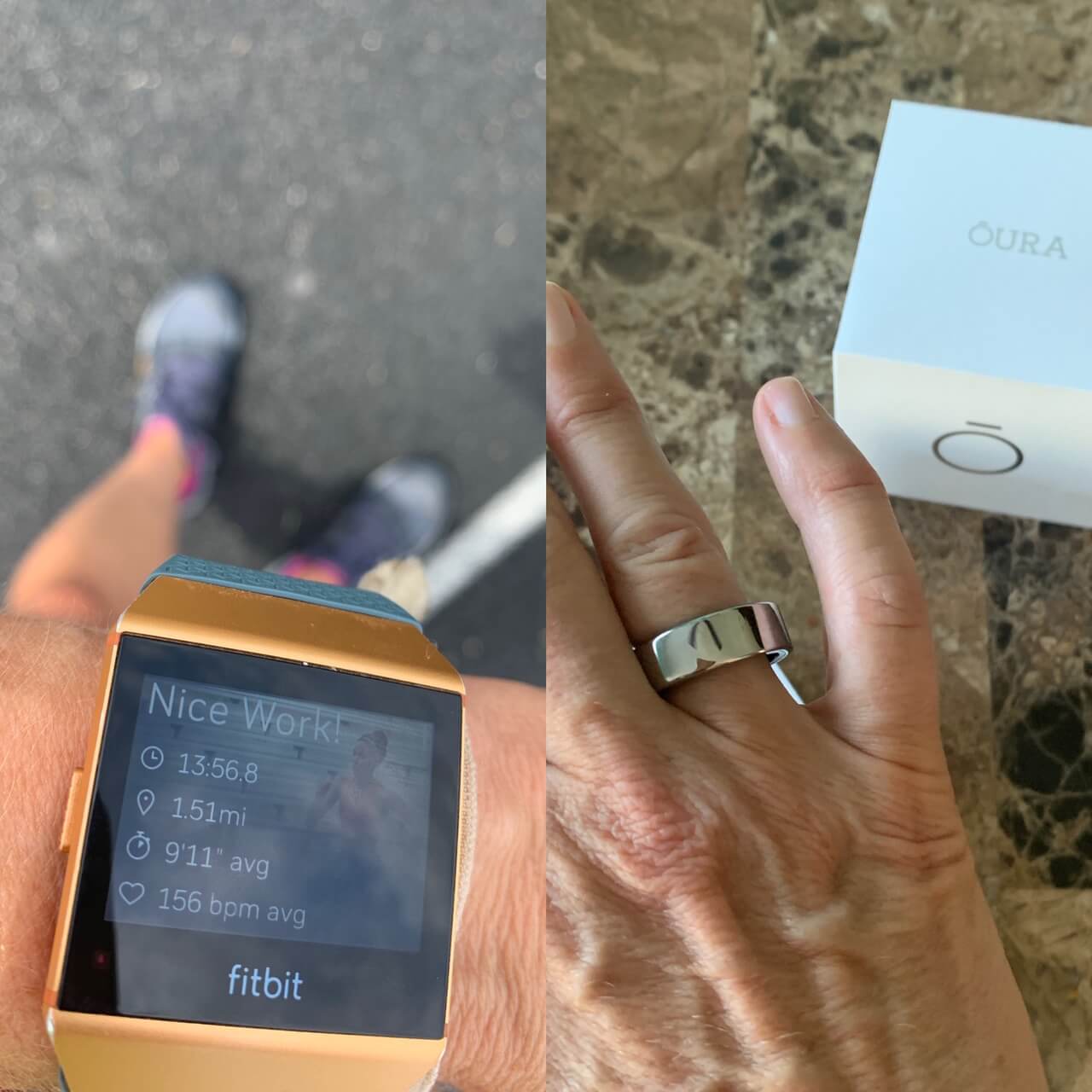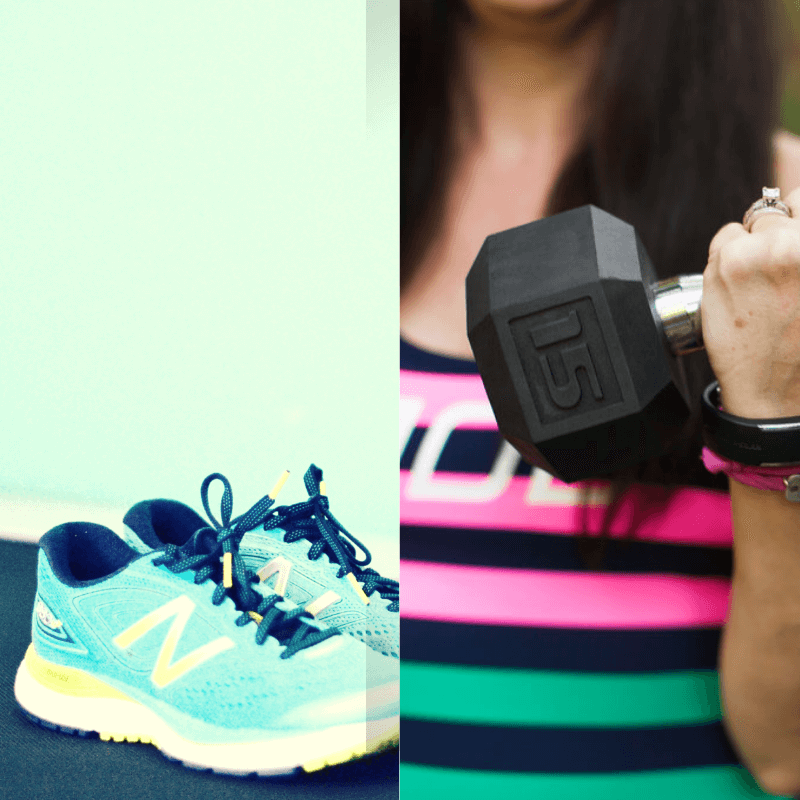My husband and I trotted like a couple of turkeys at a Thanksgiving Day 5k last month. I had been training for a half marathon, and I spent most of my long training runs reminding myself to slow down, so it was fun to try to run faster over a shorter distance, but hubby ran ahead of me after the first mile.
I could see him in the distance, and I knew if I surged, I could probably catch up, but I was working hard to manage my energy levels to sustain my faster pace for the distance. I know from experience if I pushed too hard, then I would burn out far before I could finish. I was uncomfortable at this pace, but a manageable uncomfortable. If I pushed to a sprint to catch up, I knew it could backfire.
I was working at a pace that as a running coach, I describe to my clients as comfortably uncomfortable. It’s not a leisurely pace, I was working harder than comfortable, but it was a manageable pace, not a sprint; A pace I could have probably held for an hour, but not for two — a tempo pace.
I was managing my energy levels and my expectations. I knew if I pushed a little harder than usual, but not go all out, I could maintain progress in my pace and get across the finish line a little faster. I also knew at this pace; I wasn’t running alongside my husband. That would have to be ok. We have to run our own race.
After we ate dinner at 3 PM on Thanksgiving, hubby and I lied down for a nap because we were up a 5:30 am that morning for the Turkey Trot. As I was lying there undistracted by technology, I started thinking about how running comfortably uncomfortable parallels life, and if we live our lives a little bit comfortably uncomfortable, we could make more progress that’s manageable, than if we try to go all-out all the time.
It got me thinking about what it means to get outside our comfort zone. Good things happen outside our comfort zone, we’re told. “Get comfortable with being uncomfortable, “ Jillian Michaels screams at us from the TV (wait. what year is it?).
But feeling uncomfortable can be hard and scary, and if you’re anything like me, could send you running to hide under the covers until the anxiety of it goes away. Maybe being too uncomfortable too soon is too much of a jump.
I spent a lot of my life learning to live in balance. It’s something I have to be aware of even today. I can quickly get off balance and become too extreme in either direction; Too strict or too laid back. I spent many years battling the all-or-nothing mindset.
After my 5K I’m thinking about how working at a comfortably uncomfortable pace in life is a great way to balance effort with comfort when it comes to reaching your goals.
DON’T ATTEMPT TOO MUCH TOO SOON
Just like running too fast for your abilities in a 5K can go south quickly, too much uncomfortable at once can backfire. You can make more progress in your goals by pushing just slightly outside what is comfortable. If you try to do too much too soon, it’s easy to get overwhelmed, burnt out, or discouraged.
For example: Don’t feel like you need to quit your job to pursue your small business dreams, start a side-hustle first. Don’t go to the gym for 60 minutes every day when you start a new exercise program, go for 15 minutes at a time at first. Don’t go on a “clean eating” diet on January first living on chicken breasts and celery, instead start by replacing your sodas with seltzer waters and fast food with homemade lunches at first.
There’s always room for growth as you go. You don’t need to go all-out on your goals to achieve them, take one step at a time.
BUT DON’T TAKE THE EASY WAY OUT
We can run easy all the time, but we’ll never grow by doing that. If you want to stimulate growth, you have to push slightly outside what is comfortable. If you want to run faster, you have to train at a comfortably uncomfortable pace at times. To grow you have to push slightly outside what feels comfortable to adapt and improve.
PACE YOURSELF TO GO THE LONG HAUL
Pushing yourself to comfortably uncomfortable helps you manage your pace to reach your goals. If we focus on sustainable behaviors, we can go the long haul. Pushing slightly outside your comfort zone may be more achievable than going all out. It’s about managing your energy levels to go the distance, just like in my 5K.
RUN YOUR OWN RACE IN LIFE
Run your own race. If you compare your progress to others, you may get discouraged. Just like in my 5K, I had to run my own race and let my husband run his. I couldn’t keep up to his pace without burning out, but there were many at that race that couldn’t keep up to mine. I ended up finishing second in my age group (it was a very small race) but at the time I wasn’t comparing myself to the ladies my age, I was looking at what my husband could do.
All we can do it is our best. If you make an effort to push slightly outside your comfort zone to try new things and explore new ideas, you’ll go far.
AVOID ALL-OR-NOTHING
It can be tempting to think if you’re not going full throttle, you’re better off not doing anything at all. But any effort outside of easy is movement in the right direction. Small actions over time lead to significant results.
Did you like this post? Know someone who might benefit? It helps me when you share with your friends and followers.













The single-leg deadlift is one of the most effective exercises for runners to improve balance and build independent hip and leg strength to run strong and reduce the chance of injury. Learn to perform the single-leg deadlift properly, and how to progress the exercise for continuous improvements.